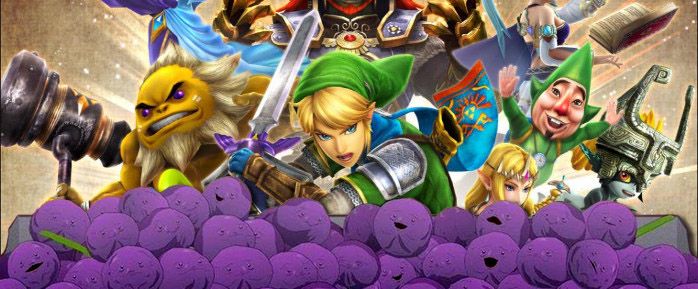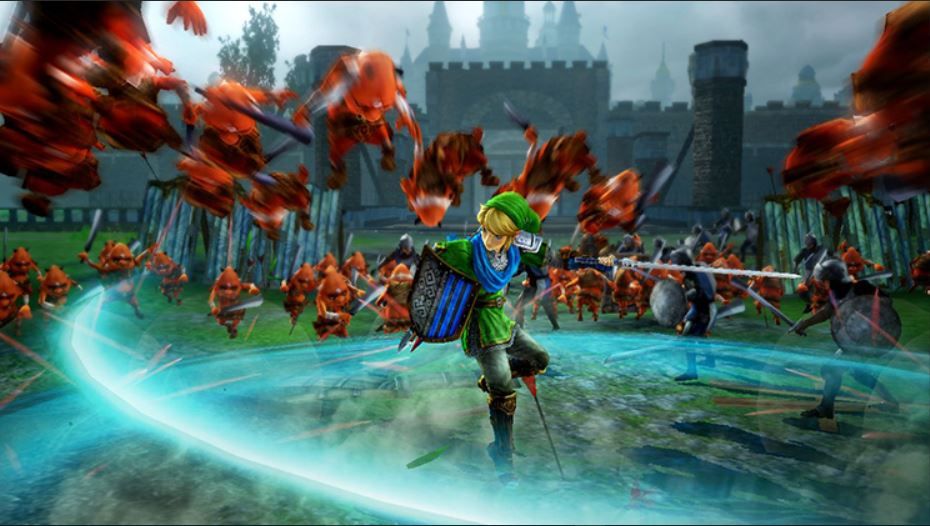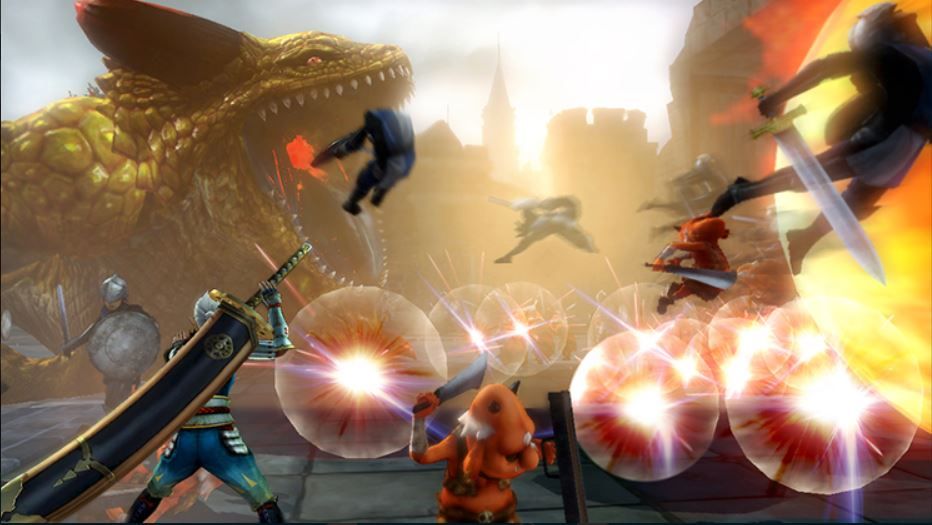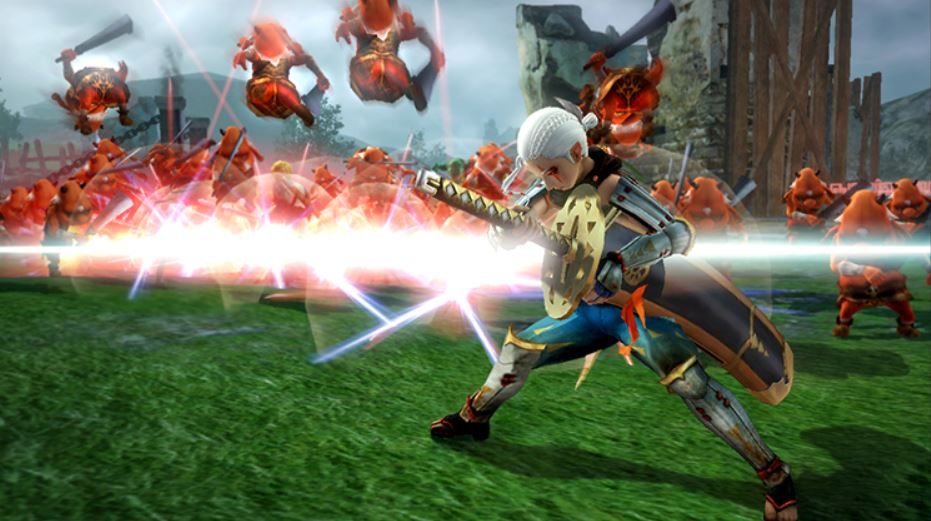Member the games you used to play? We member. The basement at the Hardcore Gamer office has a section known as the Crust Room, with an old grey couch and a big old CRT TV. All the classic systems are down there collecting dust, so in an effort to improve the cleanliness of our work space, we dust off these old consoles every so often and put an old game through its paces, just to make sure everything stays in working order. We even have a beige computer with a floppy disk drive.
Throughout the years Zelda games have always evolved with the progressing Nintendo consoles. The variations of each Zelda title made each game feel unique, and while everyone has their favorite, outside of the reviled Phillips CD-i titles most if not all the Link's adventures had received favorable receptions. The majority of Zelda titles were developed in house by Nintendo, but sometimes good things happen when they branch out and try new things and in a collaboration between Koei Tecmo and Nintendo a Dynasty Warriors style Zelda game, Hyrule Warriors, was born. It's more a spin off than a mainline entry in the Zelda franchise, but does maintain some traditional Zelda elements while adhering to the Team Ninja one vs a thousand hack and slash formula.
The Zelda timeline between all the games can be tricky to keep straight, so in order to avoid adding to the confusion, Hyrule Warriors takes place separate from the canon Zelda timeline. In some manner of logic that could only exist in a video game, Ganondorf was defeated long ago and his soul broke into four fragments. Three of them were trapped in moments of time while the fourth ended up trapped in the Master Sword. Ganondorf somehow devises a plan for his own resurrection that is being done through Cia, the sorceress who is charged with keeping the Triforce in balance. Cia's infatuation toward the spirit of the hero of legend allows Ganondorf to purge her inner light. This essentially corrupts her and she opens the Gate of Souls, a portal to different points in Hyrule's timeline and uses her minion Wizzro and Volga to amass an army of monsters to conquer Hyrule.
This of course throws Hyrule into complete disarray, Hyrule Castle is taken and Zelda is nowhere to be found. Luckily, Link and Impa meet up with the Lana, a sorceress who hails from the same clan as Cia and the mysterious Sheik, a Skeikah warrior who somehow conveniently knows where Zelda is. Players who have kept up with the mainline Zelda games are now realizing the plot is basically an excuse to throw all various characters from the Zelda games together in one setting, which is further reinforced with the introduction of Fi, Midna, Darunia and other familiar faces. Similarly to other Omega Force developed games like Dragon Quest Heroes, Warriors All Stars and Warriors Orochi, the space time continuum tears in these games exist mainly to throw beloved characters together in a world to fight zillions of enemies and Hyrule Warriors is this format with the Zelda universe.
The general gameplay of Hyrule Warriors is about what someone would expect from this sort of collaboration. To say it is exactly like Dynasty Warriors would be an oversimplification but it wouldn't be inaccurate. Link, or whichever of the other Zelda characters the player chooses, finds themselves on the battlefield to single-handedly slaughter hundreds upon hundreds of moblins and other Zelda-themed cannon fodder. Often times they are tasked with protecting some central figure on the battlefield, and like many other Musou games, this particular character that needs to be protected at all costs has zero survival instinct and incompetent personal guards, meaning the player may have to defer some other battlefield objectives to serve as a bodyguard.
While Hyrule Warriors is not a traditional Zelda game, the development team wanted to create this game because they were Zelda fans and that fandom shows in certain game elements. Classic Zelda sound effects and remixed music worked their way into the game along with certain gameplay elements. Classic boss fights like Dodongo and Gohma were reimagined to fit this style of game but their classic weaknesses, such as an arrow to the eye or bombs causing indigestion, were incorporated as a form of a fan service to help make this feel like an authentic Zelda spin off and not just a generic Musou game with a Zelda skin.
Hyrule Warriors, and games of this ilk in general, are fun on single player but the relatively mindless arcade style action is repetitive by design and can only hold single player interest for so long. This sort of gaming experience lends itself better to multiplayer, and Nintendo being Nintendo it brings local co-op to Hyrule in a innovative way, at least on the original Wii U version. One player will play on the TV while the other will use the Wii U gamepad tablet. A split screen option would have been nice for the traditional approach to multiplayer but this format isn't entirely bad. Neither player has to sacrifice screen space or image distortion with their own individual screen but one person having to use the tablet screen while the other gets to enjoy everything on the large TV seems imbalanced. Also, on Legend Mode a second player can't join until after some introductory story missions are completed first for plot reasons.
Hyrule Warriors is overall a successful merge of traditional Legend of Zelda elements and the Dynasty Warriors template. The open-world exploration and puzzle-solving parts of traditional Zelda games take a backseat to a large increase in hack and slash action. It's a side story outside of the main Zelda timeline and as such is a fun excuse to bring together several Zelda characters whose interactions would be anachronistic. It isn't my personal favorite Musou game out there, and it's doubtful anyone claims this as their favorite Zelda game, but this is an enjoyable and worthwhile game as a fan of both. It's clear from playing it that the developers did want to create an authentic Zelda experience within this type of game and for the most part they succeeded.
Hyrule Warriors originally was released for Wii U in 2014. In 2016 it was ported to the 3DS with some graphical downgrades but included all the DLC content as Hyrule Warriors Legends. It was again ported to Switch in 2018 with some graphical upgrades and all the additional DLC content Hyrule Warriors Definitive Edition. Any version of it is fun, but the more recent Switch port is the best value since the Wii U version is the same price on the Nintendo eShop.
Want to Member some more old games we love? You can see all our Members here.




